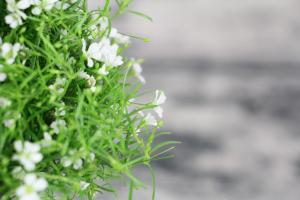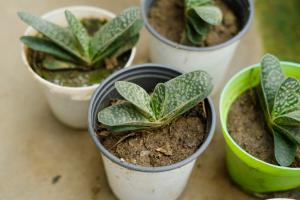How to Give Fertilizer to Potted Plants
One of the crucial aspects of potted plants’ maintenance is giving them the right nutrients they need to thrive. Proper fertilizer application helps promote healthy growth and development, but the process can be overwhelming for beginners. In this guide, you will learn how to give fertilizer to potted plants to ensure that they remain healthy and vibrant throughout their growth stages.
Choose the Right Fertilizer
Before you apply fertilizer, you need to select the right one that best suits your plant's needs. There are different types of fertilizer, each containing different combinations of nutrients. The most common fertilizers are liquid, granular or slow-release fertilizers, and they are readily available at garden stores.
You can also make your fertilizer by using organic materials like compost or worm castings. Organic fertilizers are a perfect choice for potted plants because they slowly release nutrients and improve soil structure over time.
Understand the Plant's Nutrient Needs
Each potted plant has its unique nutrient needs, and understanding these needs is vital to prevent over-fertilization or under-fertilization. Over-fertilization can lead to nutrient burn or death of the plant, while under-fertilization can cause stunted growth and pale leaves.
Read the label instructions before applying any fertilizer to ensure that you are using the right amount and type of fertilizer. Some plants like citrus and vegetables require more nitrogen, while others like succulents and cacti need less nitrogen and more phosphorus.
Apply the Fertilizer
Once you have selected the right fertilizer and understood your plant's nutrient requirements, it is time to apply the fertilizer. Dilute liquid fertilizers in water according to the manufacturer's instructions and apply the solution around the root zone. Ideally, you should water the plant first to prevent fertilizer burn.
For granular or slow-release fertilizers, sprinkle them around the plant's base and mix them with the soil. Be cautious not to allow the fertilizer to touch the plant's leaves as it can cause fertilizer burn or scorch the foliage.
When to Fertilize
Knowing when to fertilize your potted plants is essential to avoid harming them. Most plants should be fertilized when they are actively growing, typically in spring and summer. However, if you notice signs of nutrient deficiency like yellowing of leaves or stunted growth, you can fertilize them with a balanced fertilizer, but do not overdo it.
On the other hand, potted plants do not require fertilizer during winter months when they go dormant, and applying fertilizer can stress the plant and even damage it.
Final Thoughts
Giving the right amount of nutrients to potted plants is an essential part of their care routine, and it requires a bit of research and understanding of the plant's needs. Always choose the right fertilizer, understand the plant's nutrient requirements, and apply the fertilizer correctly to ensure that your potted plants thrive and bring beauty to your home or garden.

 how many times do yo...
how many times do yo... how many planted tre...
how many planted tre... how many pine trees ...
how many pine trees ... how many pecan trees...
how many pecan trees... how many plants comp...
how many plants comp... how many plants can ...
how many plants can ... how many plants and ...
how many plants and ... how many pepper plan...
how many pepper plan...





























